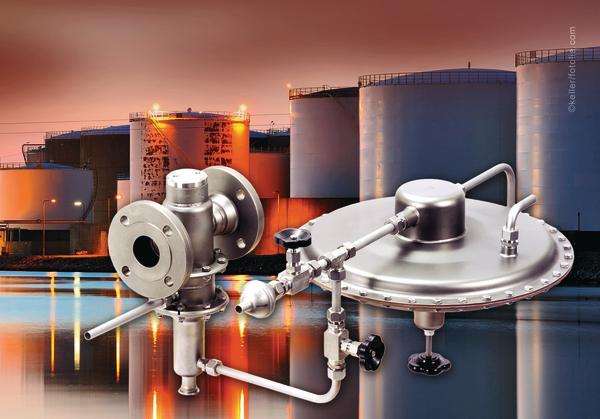To reduce fossil fuel consumption and open up new energy markets as well as re-structure existing ones, the demand for fuels based on bioethanol has risen considerably. Although such fuels, which can have a bioethanol content of up to 10 %, are recognised as a contribution to climate protection, they present new challenges for tank storage operators.
Author Angela Scafa Assistant to the Sales Director, Mankenberg
Bioethanol is added to car petrol; in Germany, admixtures of up to 5 % (E5) are not required to be specifically labelled. Higher blends in petrol pumps are subject to labelling at the place of distribution. In Germany such fuels contain 10 % bioethanol and are sold with the suffix “E10”. Bioethanol is water soluble and may form methyl esters when it reacts with water (for example, from the humidity in the atmosphere). Methyl ester is hygroscopic and highly aggressive, and can severely dam-age tank foundations made of concrete. In addition, the fuel deteriorates as a result of storage. To avoid this kind of reaction, tank blanketing is used to store biofuels. The void volume in the tank head space is filled with an inert gas (such as nitrogen) to prevent air from getting into the inner space. The inert gas pressure inside the tank can vary owing to changes in the temperature or the weather conditions and depending on the filling level – in other words, the tank “breathes”. Consequently, the main task of the tank blanketing system is to maintain the inert condition permanently, regardless of what caused the volume change in the gas chamber occurred.
High control precision
Mankenberg developed the RP 840 pressure reducing valve in close cooperation with its customers as a technical solution to these problems. A millibar valve which has been proven in use for several decades acts as a pilot and controls a main valve adapted to the plant. Thanks to the large diaphragm of the pilot valve, very low set pressures are possible. Thus, the valve’s high control precision at very low pressures (approx. 5 mbar(g)) is combined with the volume flow required for large tanks and pumps. This fluid-controlled pressure reducing valve is made of deep-drawn stainless steel with excellent corrosion resistance. This is particularly important for its intended use in the highly corrosive atmosphere of tank farms. The valve has a soft-sealed cone and is arranged as a pre-mounted unit in a rack.
If the outlet pressure falls below the preset nominal value, the pilot valve is kept open by its spring. The control fluid flows off towards the valve outlet. The D1 throttle produces a pres-sure drop, so that the control pressure in the main valve’s control mechanism corresponds approximately to the outlet pressure. The inlet pressure exceeds the outlet pressure and the closing force of the spring, and opens the main valve. Once the outlet pressure has reached the preset nominal value, the pilot valve starts to throttle. When this happens, the control pres-sure rises and pushes the control mechanism of the main valve into a regulating position. The D1 and D2 throttles serve to optimise the regulating behaviour. The bypass, which is equipped with a non-return valve, provides rapid closure. If the outlet pressure exceeds the nominal value, the pilot valve closes. The control pressure is equivalent to the inlet pressure. The main valve closes because the diameter of the control mechanism is larger than the valve seat. The spring likewise has a closing effect.
The pressure control valve is piped internally. The pulse lines must be installed on site with the dynamically and statically loaded lines clearly separated from each other. Thanks to the low set pressure and high control precision, the costs for the investment (thinner tank walls) and operation (lower inert gas consumption) are considerably reduced.
cpp-net.com/0314457
Share:







